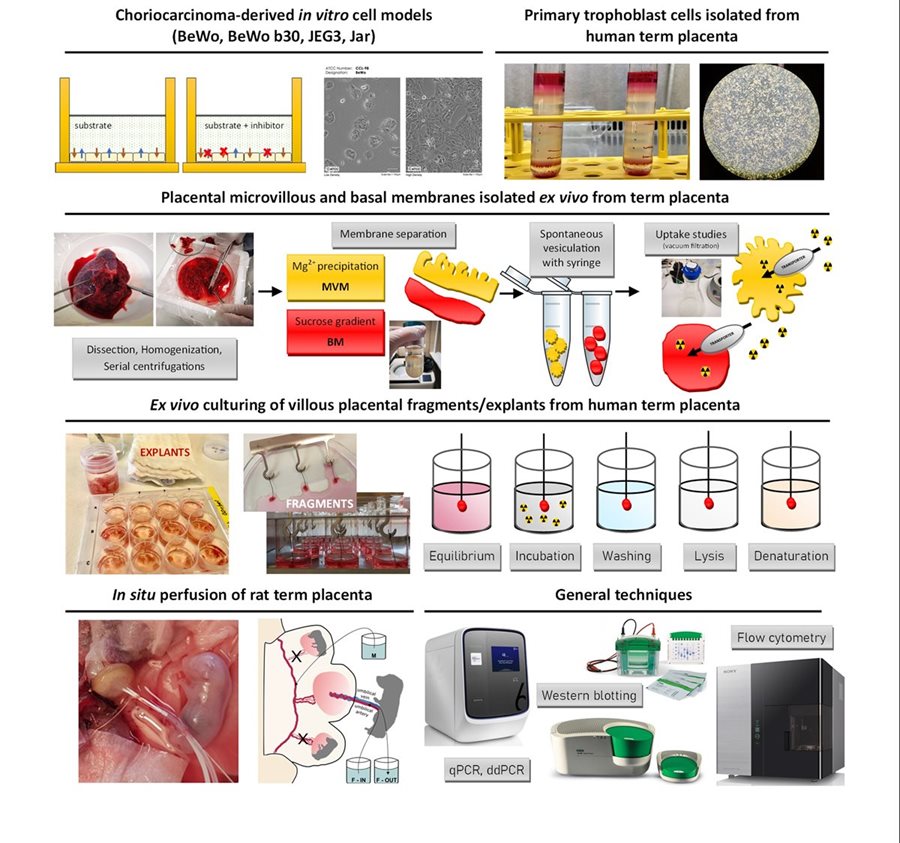Our team has sound methodological backgrounds and our molecular biology and pharmacology laboratories are fully equipped and available to carry out several different experiments. Below is a summary of experimental methods used in our lab. All these methods have been established and are routinely used in our labs. Additionally, all the instruments required for experiments are available and routinely used in our labs, including an Infinite 200 microplate reader (Tecan), a QuantStudio 6 real-time PCR system (Applied Biosystems), TransBlot and MP ChemiDoc detection system (Bio-Rad), Olympus Provis AX-70 camera for light and fluorescence microscopy and NIKON A1+ camera with NIS 5.0 image analysis software for confocal scanning microscopy, SA3800 Spectral Analyzer (Sony Biotechnology) and a QX200TM Droplet DigitalTM PCR system (Bio-Rad).

In vitro functional assays
In our experimental work we employ cellular models of trophoblast cells of human (BeWo) and rat (HRT-1) placenta as well as other common human cell lines (e.g. HCT-8, Caco-2, HepG2). To investigate the interactions (substrate specificity or inhibitory potency) of drugs with human drug transporters, we take the advantage of canine MDCK cell lines transfected or transduced by a vector carrying human gene encoding expression of particular ABC or SLC transporters. Using these cellular models, the tested drugs can be evaluated for their ability to be transported by the membrane protein and/or to inhibit the transporters´ activity.
We particularly perform:
- Accumulation/efflux studies followed by subsequent analysis using flow cytometer, fluorimeter or radioactivity counter to study inhibitory potency of tested substance to particular transporter.
- Transport experiments across the polarized cell monolayers cultured on cell inserts. In this experimental setup, novel substrates of studied transporters can be revealed as their transport across the cellular monolayer is accelerated in the transporter driven direction.
- ATPase assays on transporter expressing membrane vesicles help us predict interactions of novel drugs with ATPase site of drug efflux transporter.
- Combination studies based on the combination index method of Chou-Talalay are used to evaluate the quantitative definition for additive effect, synergism or antagonism of two anticancer drugs applied in combination.
Expression assays
- Gene expression assays - in our laboratory we routinely employ quantitative RT-PCR/dd-PCR method
- Protein expression assays - for quantification and visualization of changes in expression of studied transport proteins